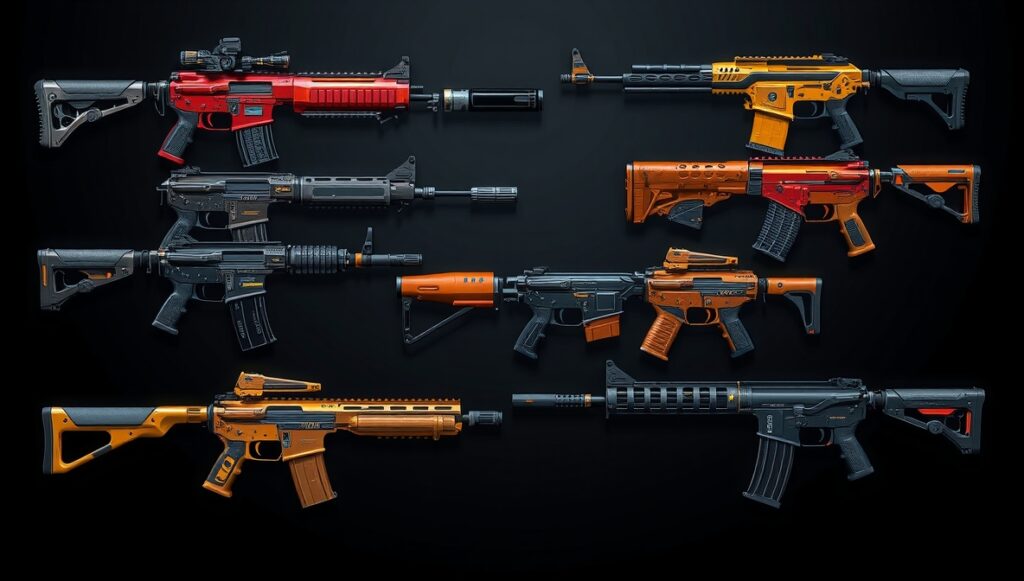
The value of CS2 skins is shaped by a unique blend of rarity, demand, aesthetics, and market psychology. Understanding these factors is crucial for collectors, traders, and investors who want to make informed decisions and forecast future price movements. This guide explains the core drivers of skin value and offers practical strategies for predicting which skins might rise in price.
What Determines Skin Value?
- Rarity and Drop Rate: The rarer the skin, the higher its value. Drop rates are set by Valve and are public for each case. Exceedingly rare items (like knives, gloves, or top-tier finishes) have the lowest drop chances and command the highest prices. Discontinued or “vaulted” cases make their skins even scarcer over time.
- Weapon Popularity: Skins for meta or iconic weapons (AK-47, AWP, M4A4, USP-S, Glock-18) are always in demand and tend to be valued higher than skins for less-used guns.
- Visual Appeal and Design: Skins with unique, vibrant, or “clean” designs attract more buyers. Special effects (holo, foil, StatTrak, rare patterns like “Blue Gem” or “Fade”) add significant premiums.
- Condition (Float Value): Factory New and Minimal Wear versions are worth more than Field-Tested or Battle-Scarred. Float value can also affect pattern visibility, further impacting price.
- Historical and Event Significance: Skins from legendary events (e.g., Katowice 2014 stickers, Operation skins) or those with a story (e.g., M4A4 Howl’s copyright ban) become collector’s items.
- Supply and Case Availability: If a case is removed from the drop pool, its skins become scarcer, leading to price appreciation as supply dries up.
- Influencer and Pro Player Usage: Skins used by famous streamers or pros during major tournaments often see spikes in demand and price.
- Market Trends and Speculation: Community hype, rumors of case rotations, or anticipated game updates can drive speculative buying, temporarily inflating prices.
How to Forecast Skin Value Growth
Predicting which skins will increase in value requires a mix of market analysis, historical research, and attention to community sentiment. Here’s how to approach it:
- Track Case Rotations: When a case is moved to the rare drop pool, its skins often appreciate 50–200% over the next 6–12 months. Monitor which cases are likely to be vaulted soon.
- Analyze Historical Data: Use price charts from the Steam Community Market or third-party sites to identify long-term trends and seasonal cycles (e.g., price dips during summer sales, spikes after major updates).
- Watch Pro Tournaments: Skins showcased by top players or during high-profile matches often see increased demand. Track which skins are trending in the pro scene.
- Monitor Community Hype: Reddit, Twitter, and Discord trading communities often spot trends early. If a skin is gaining attention, it may be poised for a run-up.
- Check Supply Metrics: Skins with low supply (few listings, rare float/pattern combinations) are more likely to appreciate, especially if demand rises.
- Look for Undervalued Gems: Compare similar skins across different cases and conditions. Sometimes, a visually appealing or rare skin is priced lower than its peers due to temporary market inefficiencies.
- Stay Informed on Game Updates: Changes to weapon popularity, new case releases, or visual upgrades in CS2 can all impact skin desirability and value.
Table: Main Value Factors and Their Predictability
| Factor | Impact on Value | Predictability |
|---|---|---|
| Rarity / Drop Rate | Very High | High (public data) |
| Weapon Popularity | High | Medium |
| Visual Appeal | High | Low (subjective) |
| Pro/Influencer Usage | Medium | Medium |
| Case Availability | Very High | High (trackable) |
Tips for Predicting Skin Value
- Focus on skins from soon-to-be-removed cases and those with unique patterns or high community interest.
- Diversify your investments—don’t put all your funds into one skin or case.
- Be patient: most significant price growth happens over months, not days.
- Use historical charts to spot seasonal lows for buying opportunities.
- Always monitor for sudden news (game updates, pro endorsements, case rotations) that can trigger price spikes or drops.
Conclusion
The value of CS2 skins is determined by a combination of rarity, demand, visual appeal, and market trends. While predicting future prices is never certain, understanding these factors—and tracking the right data—can give you a significant edge. Watch for case rotations, follow the pro scene, and stay active in the community to spot opportunities early. With research and patience, you can make smarter decisions and potentially profit in the evolving skin market.





